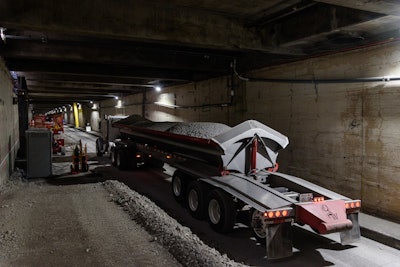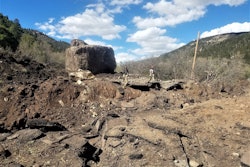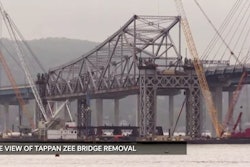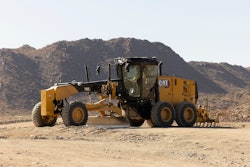 Crews truck in concrete rubble from the Alaskan Way Viaduct demolition to fill the decommissioned Battery Street Tunnel in Seattle. Photo courtesy of WSDOT.
Crews truck in concrete rubble from the Alaskan Way Viaduct demolition to fill the decommissioned Battery Street Tunnel in Seattle. Photo courtesy of WSDOT.Kiewit, the contractor demolishing the Alaskan Way Viaduct, is using concrete rubble from the viaduct demolition to fill the 3,140-foot-long, now-decommissioned Battery Street Tunnel in Seattle, ENRNorthwest reports.
The Washington State Department of Transportation (WSDOT) says the tunnel is being decommissioned because it is seismically vulnerable and its removal will improve surface mobility.
Crews are removing the mechanical and electrical systems and will then install sewer lines and perform utility work.
Once the steel rebar is removed from the concrete rubble and it is crushed to the size of a baseball, the rubble is trucked in or placed in the tunnel using funnels, and compacted using a vibrating roller. The tunnel will be filled to approximately 7 feet from the top with the rubble, then concrete will be pumped into the top part of the tunnel.
WSDOT expects the work to last into late 2020, including the filling of the tunnel and sealing of its entrances followed by street restoration along Battery Street.








